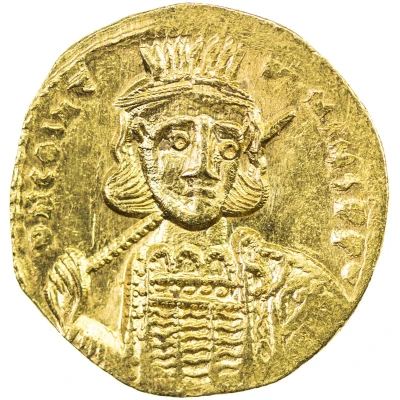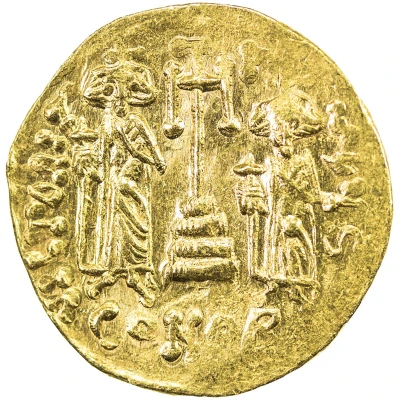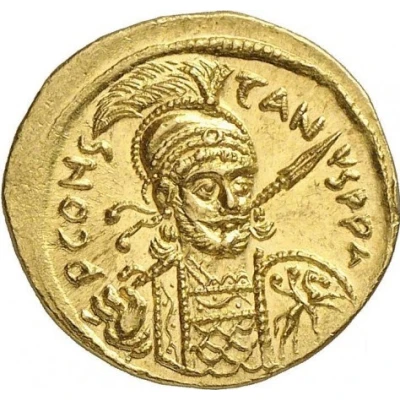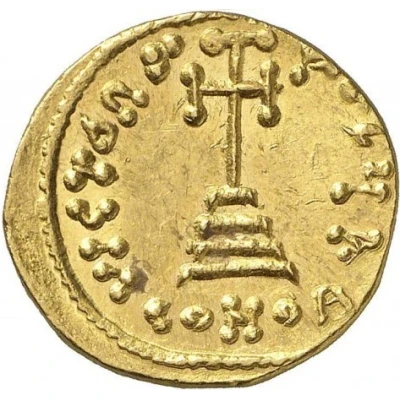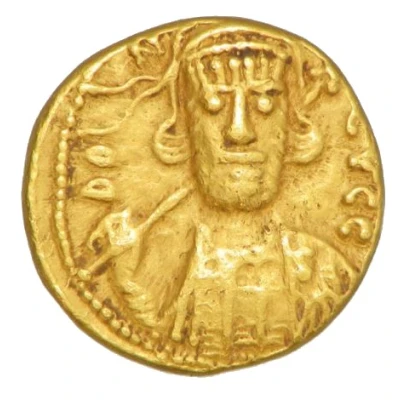
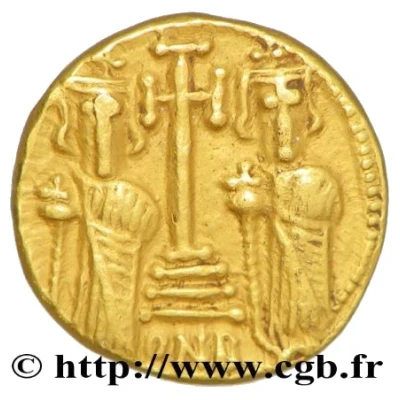

© CGB
Solidus - Constantine IV, Tiberius and Heraclius Carthage ND
| Gold (.9999) | 4.32 g | 15 mm |
| Issuer | Byzantine Empire (Byzantine states) |
|---|---|
| Emperor | Constantine IV Pogonatos (654-685) Tiberius (659-681) Heraclius (659-681) |
| Type | Standard circulation coin |
| Years | 675-676 |
| Value | 1 Solidus |
| Currency | First Solidus Nomisma (498-720) |
| Composition | Gold (.9999) |
| Weight | 4.32 g |
| Diameter | 15 mm |
| Shape | Round (irregular) |
| Technique | Hammered |
| Orientation | Coin alignment ↑↓ |
| Demonetized | Yes |
| Updated | 2024-10-04 |
| Numista | N#200053 |
|---|---|
| Rarity index | 100% |
Reverse
Potentate cross on three steps, with Heraclius on the left and Tiberius on the right, crowned, wearing the chlamydia, each holding a cruciger globe.
Script: Latin
Lettering: ONB
Comment
This type of solidus is one of the last without indiction in the field. From 678/679 (indiction 7) we have coins dated to indiction 10, (681/682), when Heraclius and Tiberius are deposed.Associated with the throne from 659 by their father Constans II in 659, Heraclius and Tiberius were deposed by their brother, Constantine IV. For the Carthage workshop, we have a much more precise chronology than for the Constantinople issues. The issues were numerous, but the hours of the African metropolis were counted. Finally Carthage fell to the Arab invaders in 698.
Interesting fact
One interesting fact about this coin is that it features three emperors, Constantine IV, Tiberius, and Heraclius, which was a rare occurrence in Byzantine coinage. This suggests that the coin may have been issued during a time of political significance or turmoil, such as a succession crisis or a military campaign. Additionally, the fact that it was minted in Carthage, which was a major city in the Byzantine Empire, suggests that the coin may have played an important role in the empire's trade and commerce.
